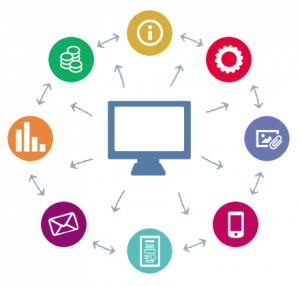A slow internet connection can be more than just frustrating—it can disrupt work, entertainment, and everyday online activities. Understanding the reasons behind this slowdown and knowing how to fix it can help you get back to enjoying a seamless online experience.
Here are five common reasons why your internet might be slowing down and how you can address them.
- Router Placement Matters
Where your router is placed can have a significant impact on the strength and reach of your Wi-Fi signal. If your router is hidden in a closet, placed in a basement, or tucked behind furniture, it’s likely struggling to transmit a strong signal across your home.
Open spaces work best for routers as they minimize obstructions. If your house is large or has multiple floors, consider investing in a mesh Wi-Fi system or a range extender to ensure seamless connectivity in all areas.
- Device Overload
The increasing number of connected devices in homes today can overload your network. From smartphones and laptops to smart TVs, gaming consoles, and IoT devices, each connection uses bandwidth. The more devices connected, the slower the speeds for everyone.
Start by identifying devices that don’t need constant internet access and disconnect them. Many modern routers come with Quality of Service (QoS) settings, allowing you to prioritize bandwidth for critical activities such as video calls or gaming. If you frequently face bandwidth issues, consider upgrading to a higher-speed internet plan that can handle multiple devices simultaneously.
- Outdated Equipment
Technology evolves quickly, and older routers or devices may not support current Wi-Fi standards. These outdated devices can bottleneck your internet speed, even if your ISP provides high-speed service.
Ensure your router supports modern Wi-Fi standards like Wi-Fi 5 (802.11ac) or Wi-Fi 6 (802.11ax), which offer faster speeds and better handling of multiple devices. Don’t forget to check for firmware updates for your router, as they can improve performance and security.
- Channel Interference
Wi-Fi signals operate on specific channels, and if your neighbors’ networks use the same channels, interference can slow down your connection. This issue is particularly common in densely populated areas or apartment complexes.
Most modern routers have an option to automatically select the least congested channel. If this feature isn’t available, use tools like a Wi-Fi analyzer app to identify less crowded channels and manually switch your router to one of those. Additionally, placing your router further away from your neighbors’ Wi-Fi sources can reduce interference.
- Regular Reboots
Over time, routers accumulate temporary data that can clog up their system and slow down your connection. A simple reboot can often resolve these minor glitches and restore optimal performance.
Make it a habit to reboot your router at least once a week. Unplug it, wait 30 seconds, and then plug it back in. This clears the router’s memory and refreshes the connection. While rebooting, check for any available firmware updates to ensure your router is running the latest software.
Additional Tips for Improving Internet Speed
- Use Wired Connections Where Possible: For activities that require a stable connection, such as gaming or video conferencing, a wired Ethernet connection is more reliable and faster than Wi-Fi.
- Run Regular Speed Tests: Use tools like Speedtest.net to monitor your internet speeds. If your speeds consistently fall below your ISP’s advertised rates, it may be time to contact them for support.
- Secure Your Network: An unsecured Wi-Fi network can be accessed by unauthorized users, which may slow down your speeds. Set a strong password and enable WPA3 encryption if your router supports it.
- Consider Your ISP Plan: If you frequently experience slow speeds despite optimizing your setup, your current internet plan might not meet your household’s needs. Consider upgrading to a plan with higher bandwidth.
Jaze ISP Manager provides built-in integration with broadband routers and CPE devices to monitor Tx/RX levels and Wi-Fi parameters through TR-069 directly from the dashboard. This helps to troubleshoot Wi-Fi signal issues and monitor network performance of end-user devices. Click here to learn more.






